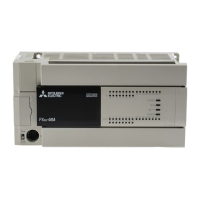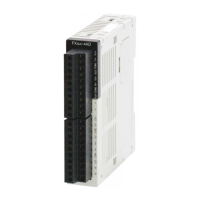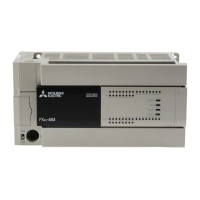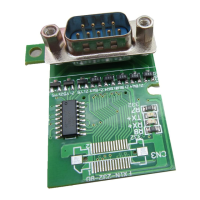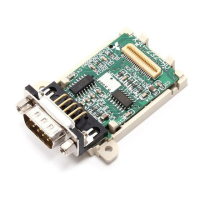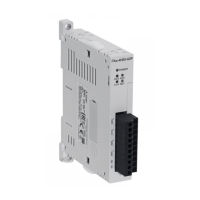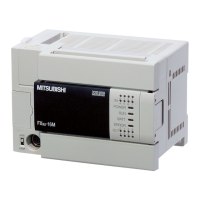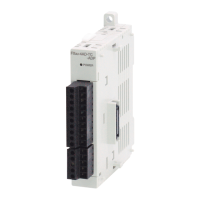364
FX3UC Series Programmable Controllers
User’s Manual - Hardware Edition
10 Display Module (Only FX3UC-32MT-LT)
10.21 User Message Display Function
10.21.3 Displaying a word device current value as a message
A numeric value can be displayed at the user message by combining BCD (FNC18), ASCI (FNC82), and
BMOV (FNC15) instructions.
→ Refer to Subsection 10.21.6 for a program example.
10.21.4 Program example 1 (user messages display switching)
The following program example is for user messages that appear in accordance with the auxiliary relay M100
to M102 ON/OFF statuses.
Note that user messages do not appear when a screen other than the "Main unit I/O operation display" is
displayed.
1. Operation
The 3 messages shown below appear in accordance with the auxiliary relay M100 to M102 ON/OFF statuses.
When auxiliary relays are ON simultaneously, the messages appear in the No.1
→ No.2 → No.3 order.
The following is a program example in which the system information has been assigned from D50 to D90 and
from M50 to M56.
2. Character data
User message data to be displayed is created in GX Developer, and is assigned to the file registers shown
below.
→ Refer to Subsection 10.21.7 for character data input.
3. Program
Message No.
File Register Where
Saved
1 D1000 to D1031
2 D1032 to D1063
3 D1064 to D1095
No.1 M100 is ON
PCL
oPcessing
S
runit
Ve .2.0r
No.2 M101 is ON
<teSting
inwoNwarm
up>
upg
No.3 M102 is ON
<epOratin
05orPcss
g>
e
hirDlinlg leos
Initial puls
MOV K50 D8300
MOV K50 D8301
M8002
Sets system information (system
signal 1) at D50 to D90.
Sets system information (system
signal 2) at M50 to M56.
D1000 D59 K32
Sets character data at D59 to D90,
depending on conditions.
BMOV
M100
D1032 D59 K32BMOV
M101M100
D1064 D59 K32BMOV
M102M100 M101
Displays character data saved at D59
to D90.
M100
M54
M101
M102
END
Message No.1 display
Message No.2 display
Message No.3 display

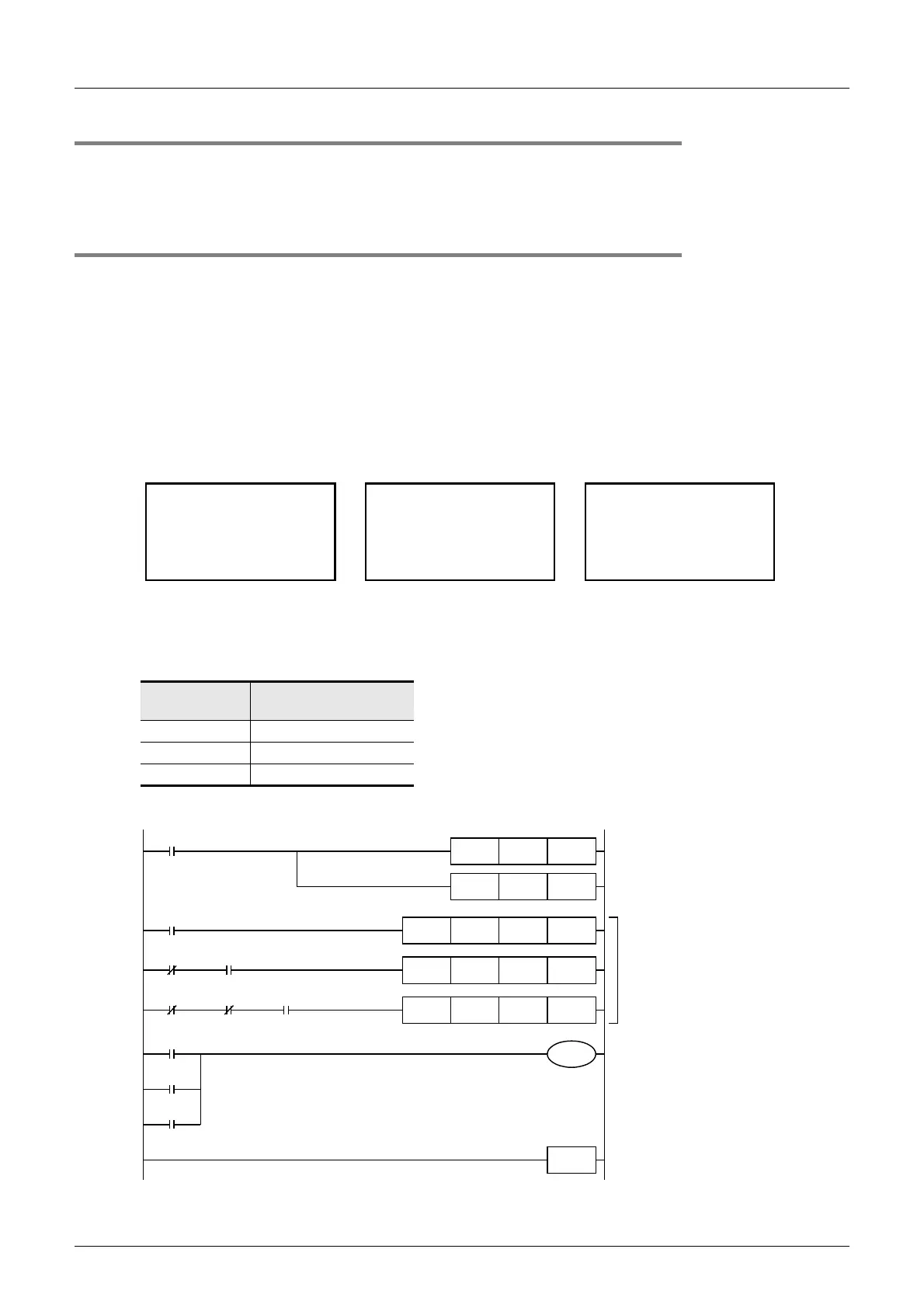